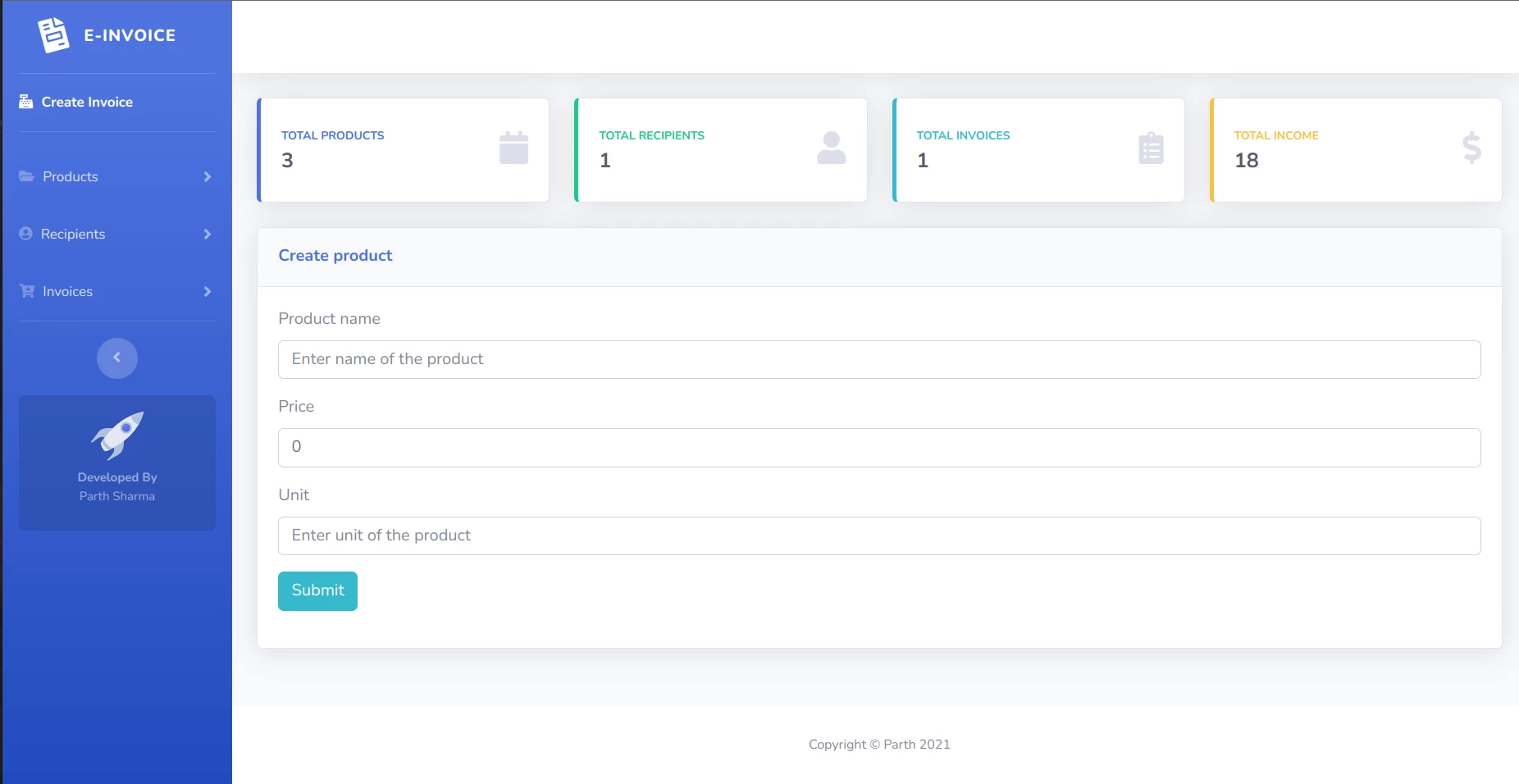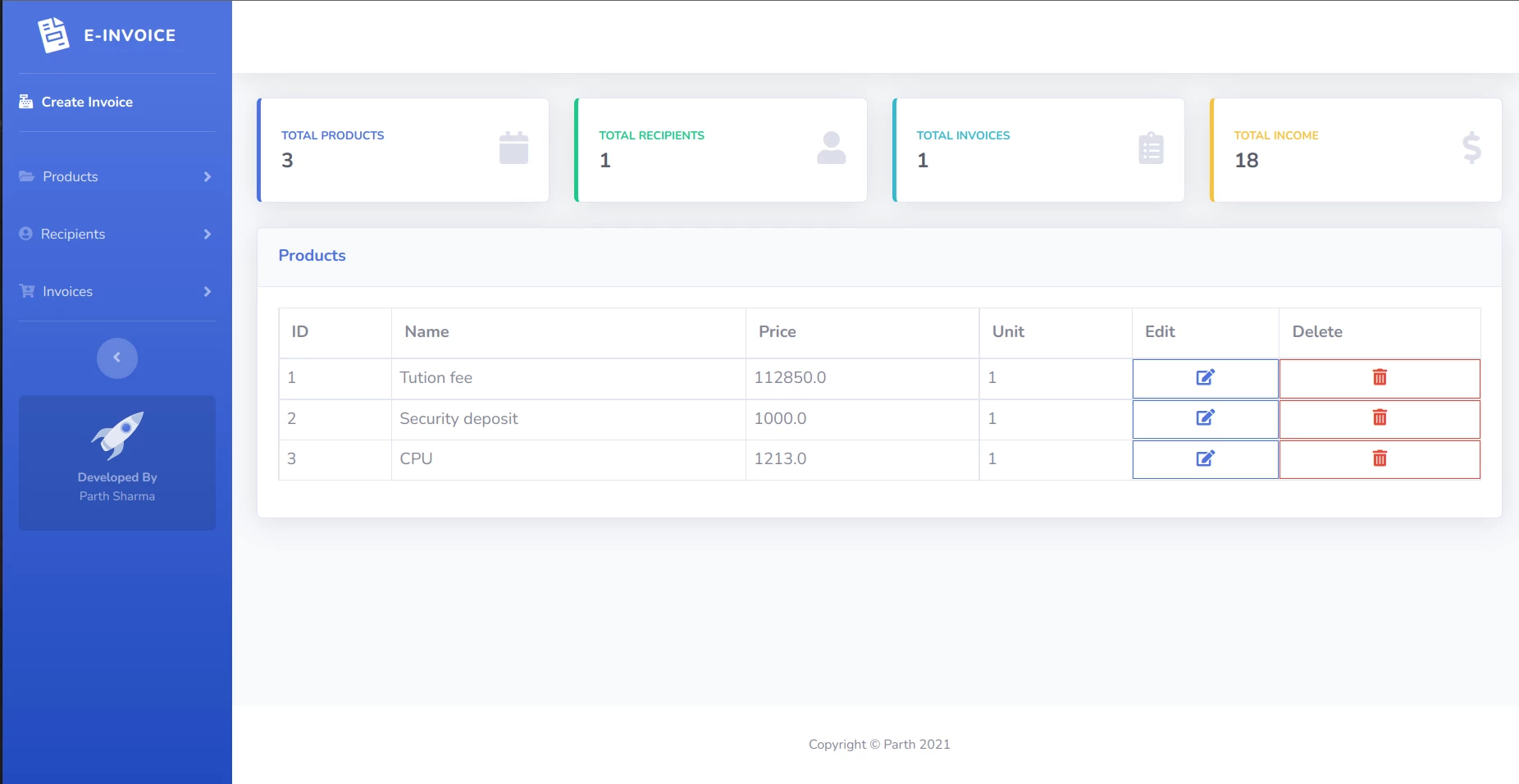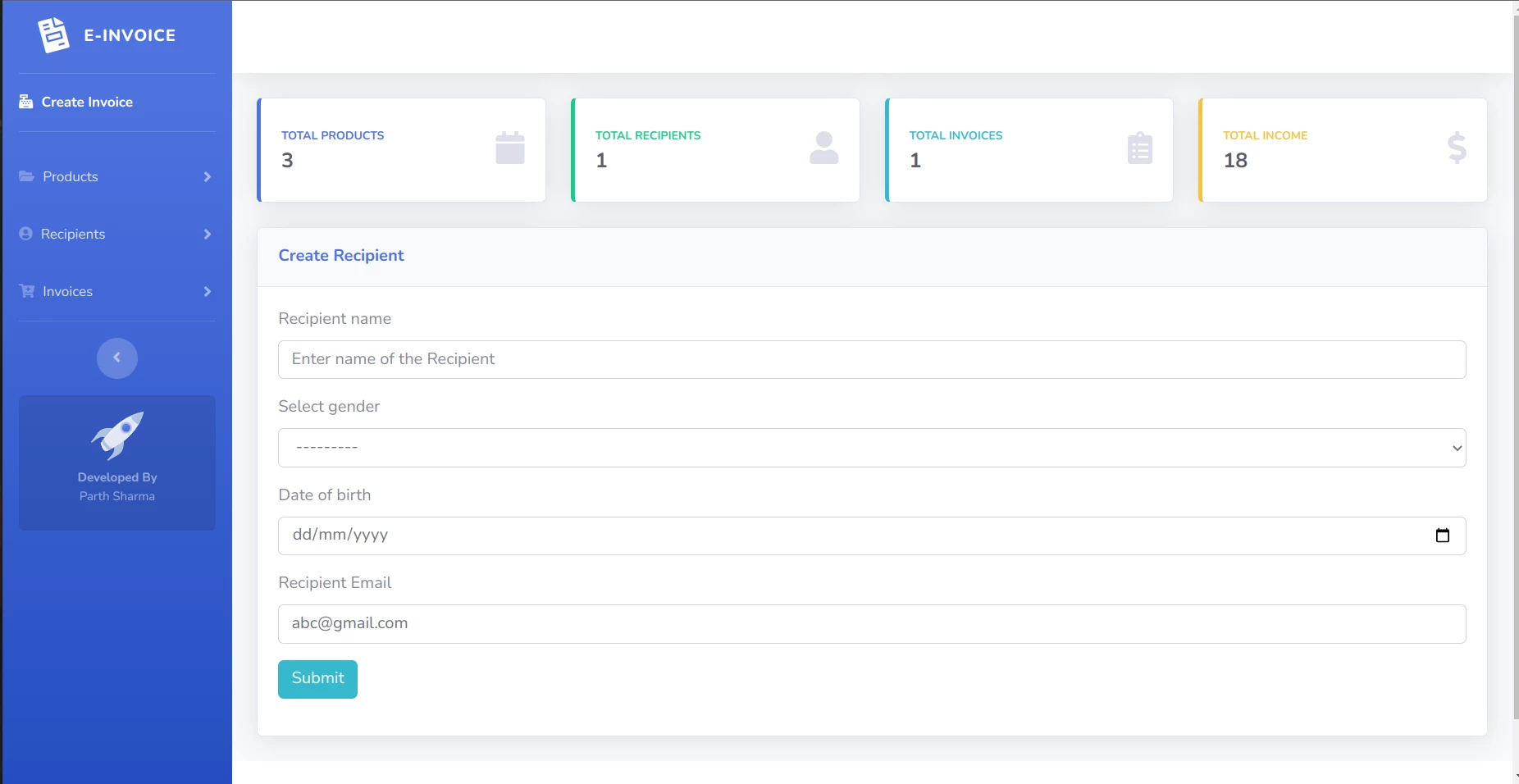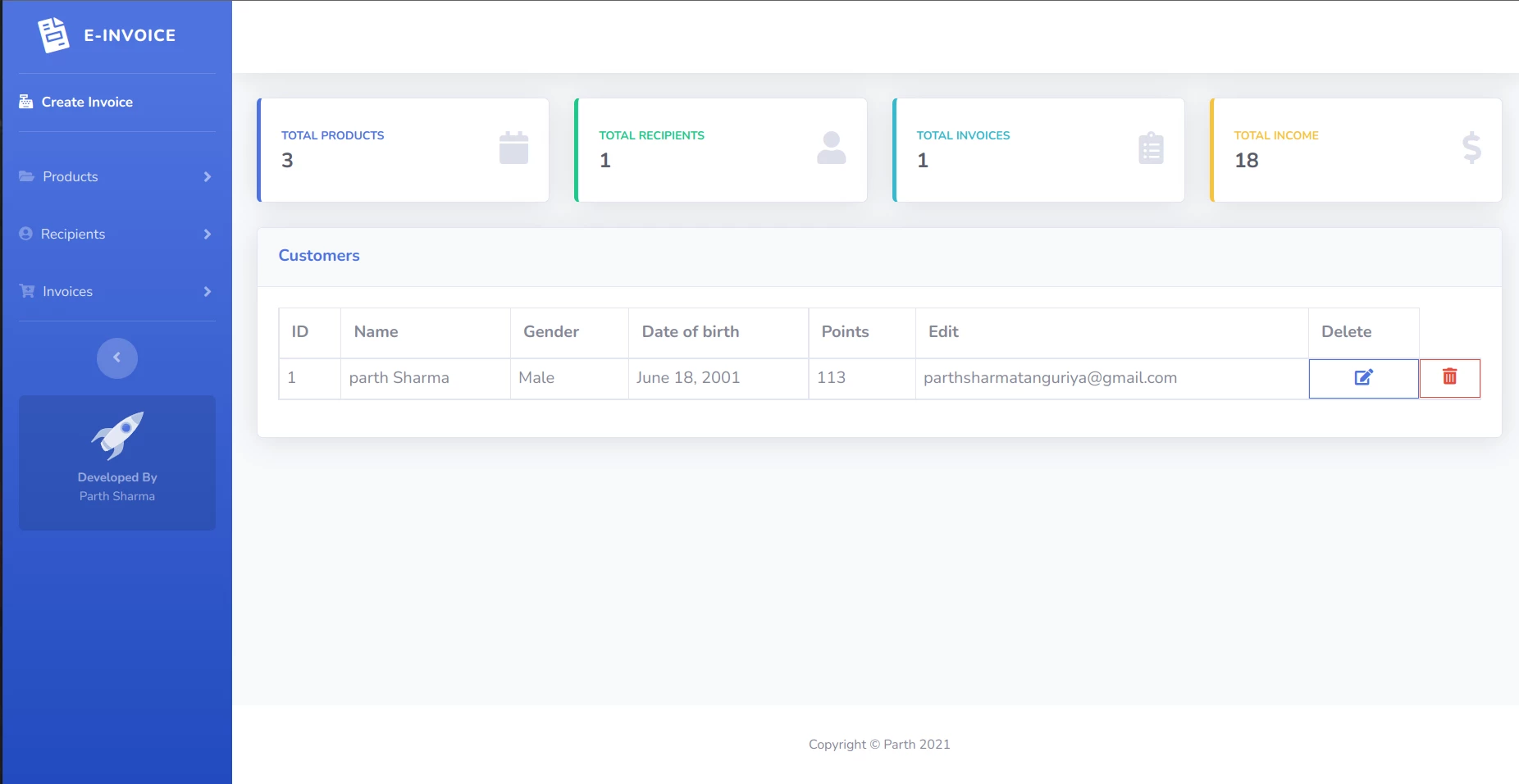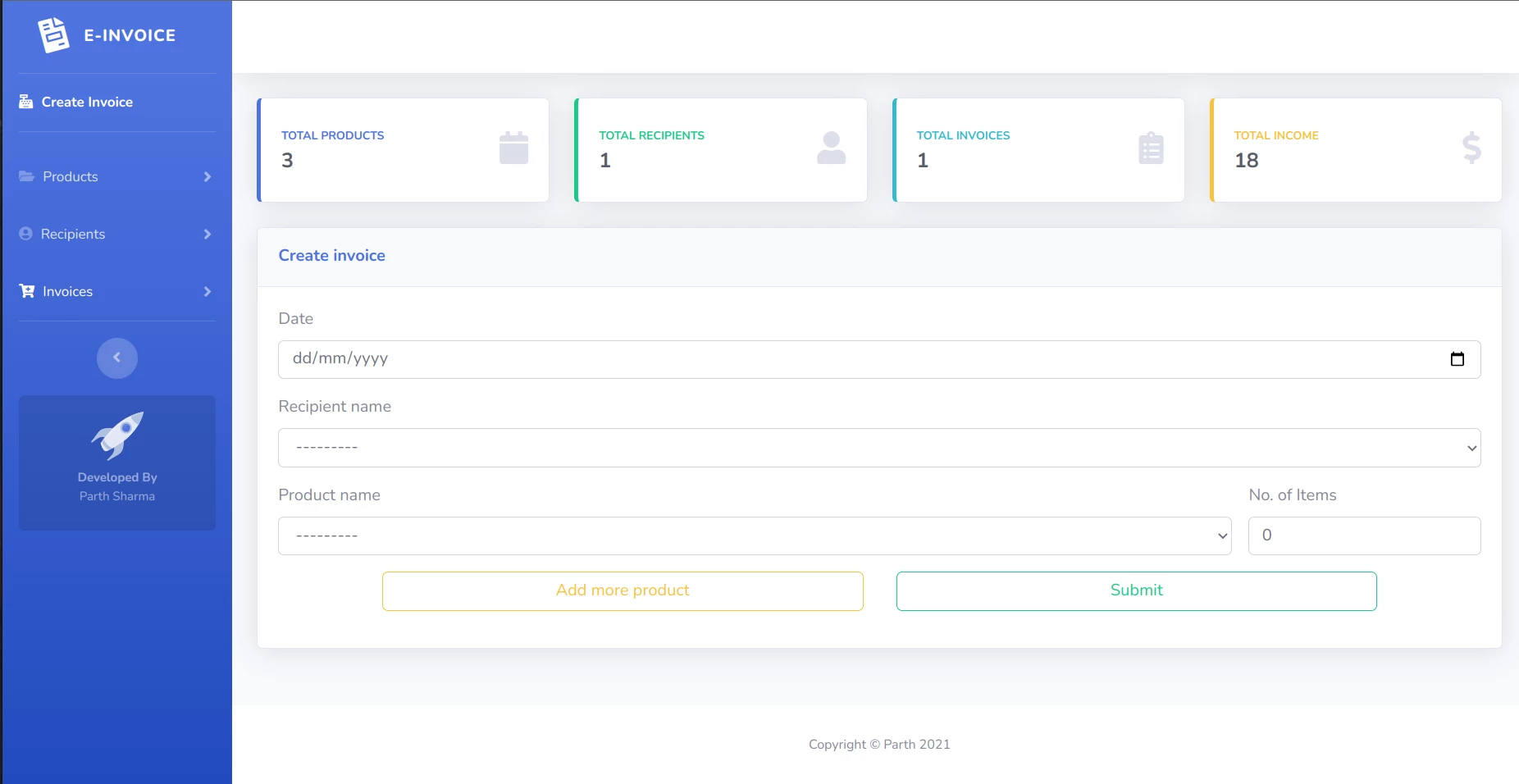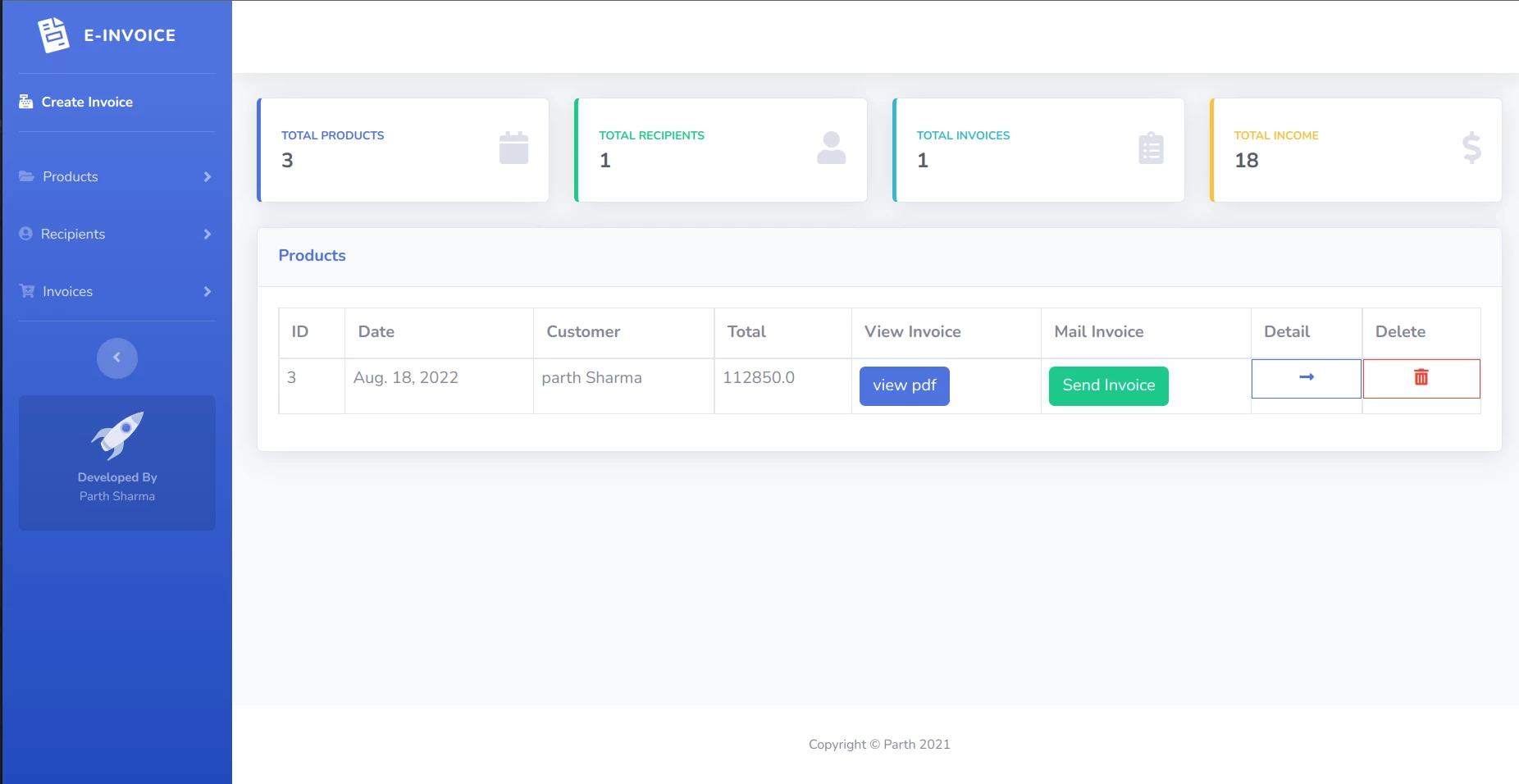There is a problem in the college that the students have to make a queue at the accounts office window. This application is an offline application to make invoice and send it to emails in just one click.
- Single user Application (Multi-user will be available soon).
- User can enter details about different products or facilities and their charges.
- User can create and edit the details of the invoice.
- User can view, download and send invoice in PDF format to mentioned recipient.
- User can add and edit recipients at any time.
- Frontend: Bootstrap SBAdmin Template
- Backend: Django
- IDE: VS Code
- Version Control: Git and GitHub
- Database: SQLite
- Hosting: Heroku(not deployed)
Fork Invoice System repository and clone at your local
- Fork and Clone the repo using
$ git clone https://github.com/ParthSharmaT/Invoice_system.git
Creating Virtual Environment
A virtual environment is a tool that helps keep dependencies required and the project isolated. If you wish to install a new library and write
pip install name_of_library
on the terminal without activating an environment, all the packages will be installed globally which is not a good practice if you’re working with different projects on your computer.
If this sounds a bit complicated, don’t worry so much because a virtual environment is just a directory that will contain all the necessary files for our project to run.
Installing venv (required once)
Windows
py -m pip install --user virtualenv
py -m venv env
Linux
python3 -m pip install --user virtualenv
python3 -m venv env
You have to start virtual environment everytime you start new terminal -
Windows
Using gitbash
. env/Scripts/activate
Using Powershell
. env\Scripts\activate
Linux
source env/bin/activate
Windows
pip install -r requirements.txt
pip install -r requirements.txt
Linux
pip install -r requirements.txt
pip install -r requirements.txt
Windows
py manage.py migrate
Linux
python3 manage.py migrate
Windows
py manage.py createsupeser
Linux
python3 manage.py createsupeser
Windows
py manage.py runserver
Linux
python3 manage.py runserver
deactivate
If you have installed new dependency, the pip freeze command lists the third-party packages and versions installed in the environment.
Windows
pip freeze > requirements.txt
Linux
pip3 freeze > requirements.txt
Everytime you change db models, you need to run makemigrations and migrate to update on database.
Windows
py manage.py makemigrations
py manage.py migrate
Linux
python3 manage.py makemigrations
python3 manage.py migrate
Parth Sharma 💻 |
This project follows the MIT License.






